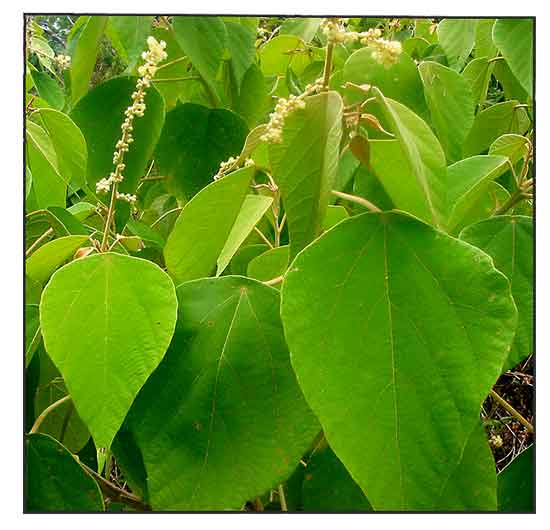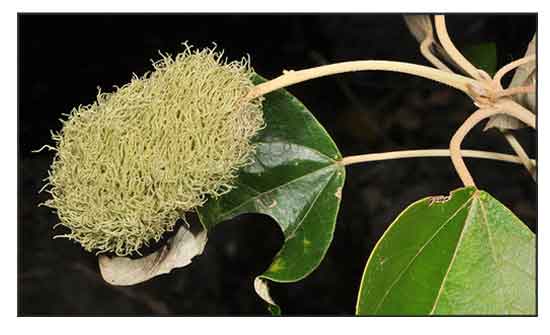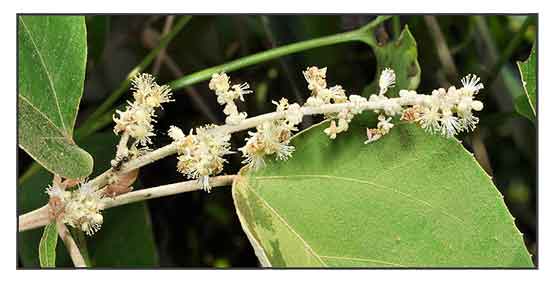
Family • Euphorbiaceae
Gapas-gapas
Hinomomo / Hinalumo
Mallotus mollisimus (Geiseler) Airy Shaw
SOFT KAMALA / WOOLY MALLOTUS
| Scientific names | Common names |
| Adelia barbata Blanco | Bampalan (Zulu) |
| Adelia bernardia Blanco | Gapas-gapas (Tag.) |
| Adisca zippelii Blume | Hanomomo (Tag.) |
| Chozophora mollisima (Geiseler) A.Juss. ex Spreng. | Himlamuo (Bis.) |
| Croton mollisimus Geiseler | Indang (Lanao) |
| Croton ricinoide Pers. | Mollissimus kamal (Engl.) |
| Echinus mollisimus (Geiseler) Baill. | Green kamala (Engl) |
| Mallotus pycnostachys F.Muell. | Soft kamala (Engl.) |
| Mallotus ricinoides (Pers.) Müll.Arg. | Wooly mallotus (Engl.) |
| Mallotus zippellii (Blume) F.Muell. | |
| Mappa zippellii (Blume) Zoll. & Moritzi | |
| Rottlera peltata Miq. | |
| Rottlera pycnostachys F.Muell. | |
| Rottlera ricinoides (Pers.) A.Juss. | |
| Rottlera zippelii (Blume) Hassk. | |
| Mallotus mollisimus is an accepted species. KEW: Plants of the World Online | |
| Other vernacular names |
| BORNEO: Ambutan, Angkut-angkut, Andalasan, Dahu, Dau, Dupulan,Du-Long, Kasobong, Kedayan, Lala-laba, Padau-padau, Patau jantan. |
| PAPUA: Bekoeaap, Bekwaap, Bie grai, Majetrip. |
| MALAYSIA: Dahu, Bayor. |
| MYANMAR: Hpadawng, Hpawng-awn, Mai-hpawng-tun, Palannwe, Po-thi-din, Taw-thi-din. |
| VIETNAM: Bucnau, Babet nau, Ruoi mem, Buc qua, Thau Dau. |
Gen info • Shrubs to small trees up to 12 m high, dbh up to 15 cm, dioecious, occasionally monoecious; bole up to 5 m high; crown up to 6 m long. Outer bark rough to finely fissured or pustular lenticellate, up to 2 mm thick, yellowish green, under surface light reddish brown; inner bark up to 6 mm thick, fibrous, light greenish; sapwood cream with watery sap; wood medium hard, cream. Indumentum dense, sometimes soft-floccose, flocci up to 4 mm long, rarely tomentose. Stipules narrowly triangular, 0.7-1.5 by 0.1-0.3 mm, caducous to persistent, margin subentire, apex acuminate. Leaves alternate to apically subopposite; petiole 30-200 by 1.5-4 mm; blade subpeltate or peltate for 1.5-40 mm, ovate, 10-35 by 8-30 cm, length/width ratio 1.2-1.4, reddish brown when young, base truncate to cuneate, margin entire to dentate, seldom 2-lobed at the widest part of the blade, longest lobes up to 15 mm long, upper surface green, basally with 0-2(-4) extrafloral nectaries, 0.8-4 by 0.4-1.8 mm, marginal nectaries 0-15 per side,
Constituents Properties Studies Availability |
May 2025
![]()
 |
| Â Â Â Â Â Â Â Â Â Â Â Â Â Â Â Â Â Â Â Â Â Â Â Â Â PHOTOS / ILLUSTRATIONS |
| IMAGE SOURCE: Euphorbiaceae : Mallotus mollisimus / Flowering twigs / Copyright © 2011 by Leonardo L Co [ref. DOL30063] / Non-Commercial Use / Image modified / Click on image or link to go to source page / Phytoimages.siu.edu |
| OTHER IMAGE SOURCE: Eupohorbiaceae : Mallotus mollisimusa / Fruit / Copyright © 2015 by P B Pelser & J F Barcelona (contact: pieter.pelser@canterbury.ac.nz) [ref. DOL97213] / Non-Commercial Use / Image modified / Click on image or link to go to source page / Phytoimages.siu.edu |
| OTHER IMAGE SOURCE: Eupohorbiaceae : Mallotus mollisimusa / Staminate inflorescence / Copyright © 2012 by P B Pelser & J F Barcelona (contact: pieter.pelser@canterbury.ac.nz) [ref. DOL41560] / Non-Commercial Use / Image modified / Click on image or link to go to source page / Phytoimages.siu.edu |
Additional
Sources and Suggested Readings |
• |
DOI: It is not uncommon for links on studies/sources to change. Copying and pasting the information on the search window or using the DOI (if available) will often redirect to the new link page. (Citing and Using a (DOI) Digital Object Identifier) |
| Â Â Â Â Â Â Â Â Â Â Â Â Â Â Â Â Â Â Â Â Â Â Â Â Â Â Â Â Â Â List of Understudied Philippine Medicinal Plants |
| Â Â Â Â Â Â Â Â Â Â Â Â Â Â Â Â Â Â Â Â Â New plant names needed The compilation now numbers over 1,500 medicinal plants. While I believe there are hundreds more that can be added to the collection, they are becoming more difficult to find. If you have a plant to suggest for inclusion, native or introduced, please email the info: scientific name (most helpful), local plant name (if known), any known folkloric medicinal use, and, if possible, a photo. Your help will be greatly appreciated. |
• |
 |




